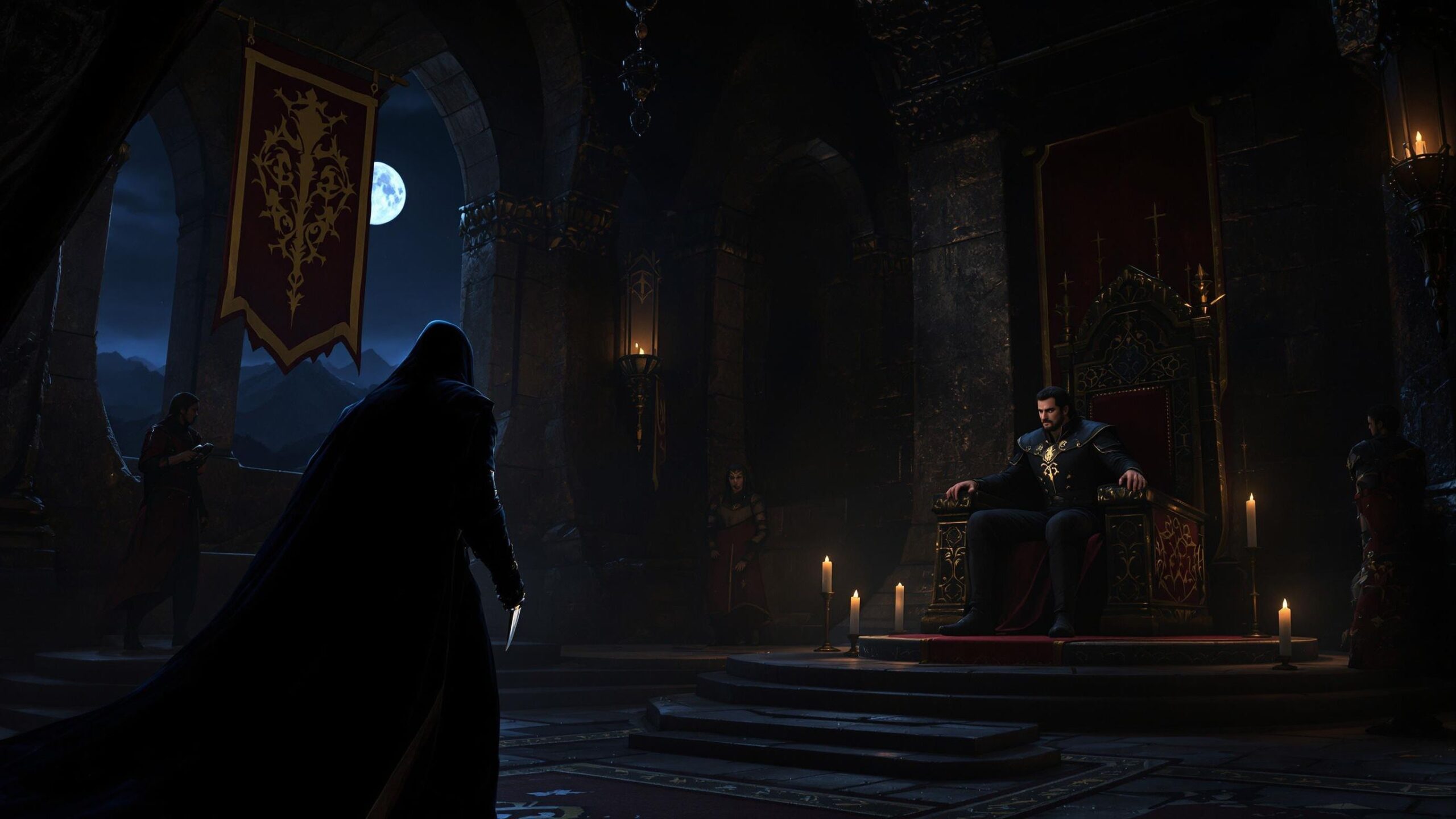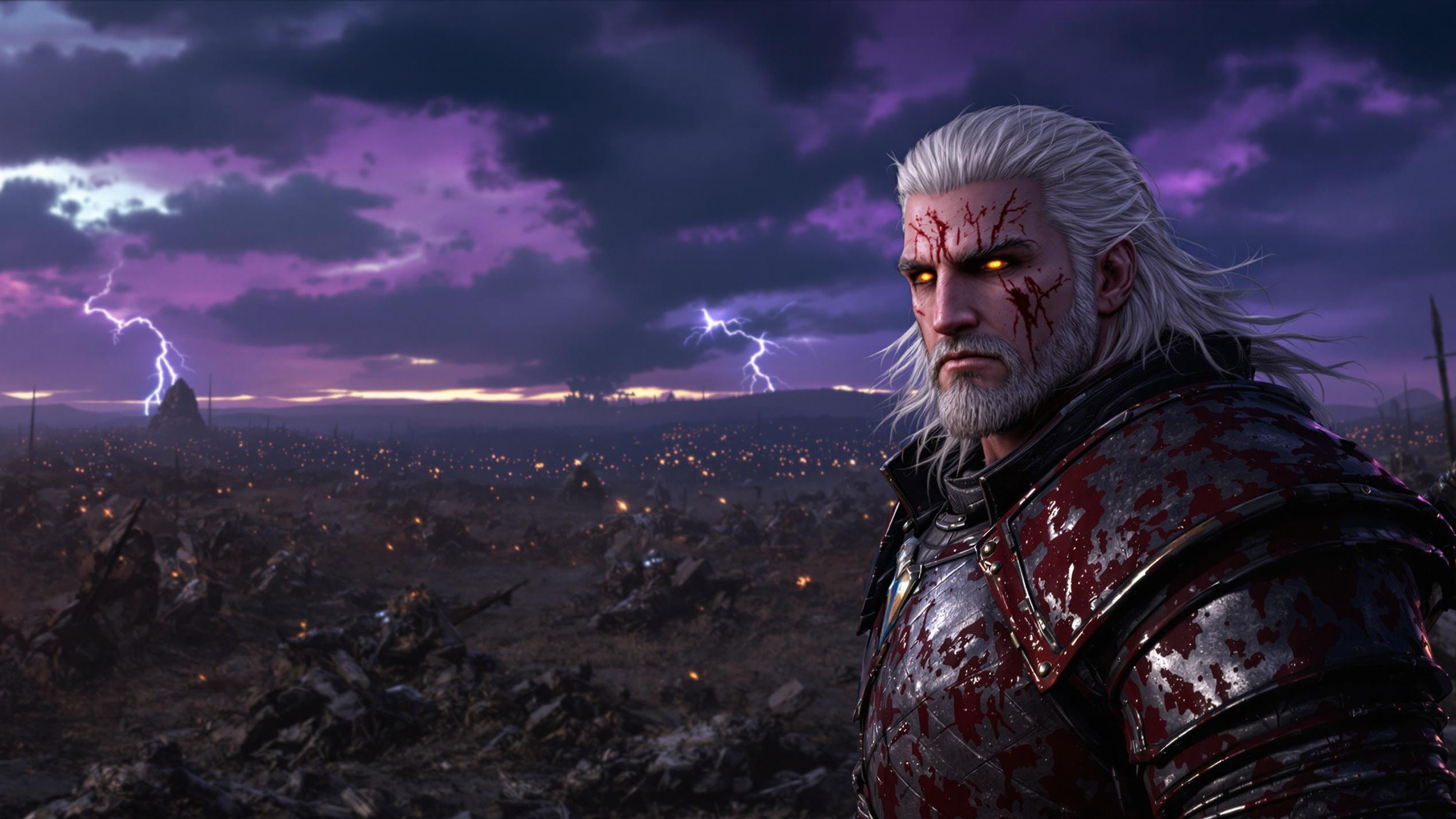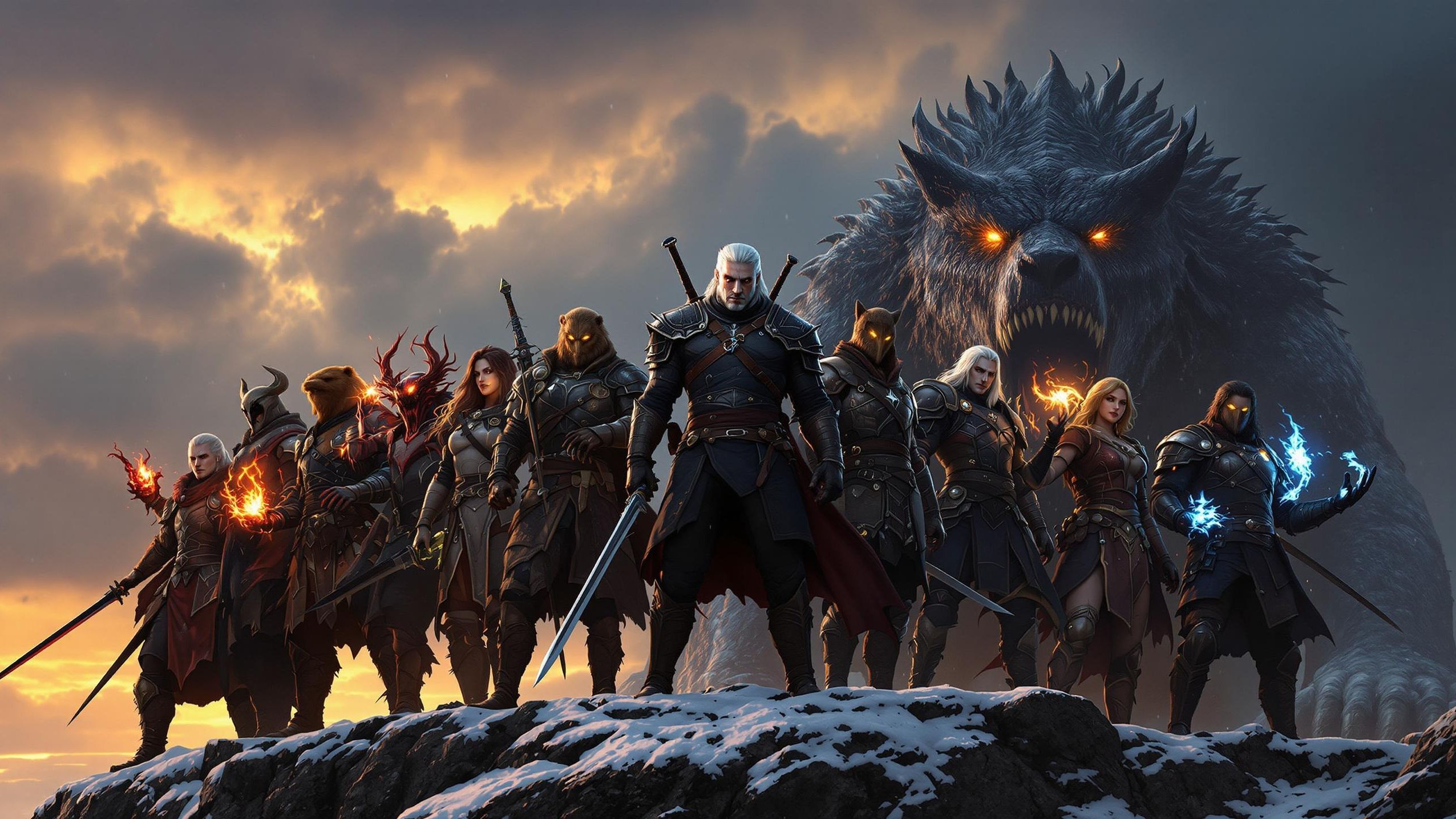In The Witcher universe, where loyalty is bought, and power often changes hands in the shadows, death is rarely clean—or fair. Assassinations in this world are acts of political sabotage, magical treachery, or deeply personal revenge. They’re not merely killings; they’re messages. Delivered by daggers in the dark, poisoned chalices, cursed spells, or calculated betrayals, these ruthless hits have changed the fate of kingdoms and shaken the very foundations of the Continent. The following ten assassinations are among the most cold-blooded, shocking, and historically significant in The Witcher lore—where survival depends not only on strength, but on watching your back.
#10: Assassination of Vizimir II, King of Redania
Vizimir II, ruler of Redania, was known for his political savvy—but even the clever fall to quiet blades. His death was orchestrated by Philippa Eilhart, the powerful sorceress who sought to strengthen her influence through the Lodge of Sorceresses. The king was assassinated under mysterious circumstances that were never formally solved, though it is strongly implied that Philippa arranged the hit to remove him as a political obstacle. This assassination was not a frenzied murder but a masterstroke of political engineering. It allowed Radovid, Vizimir’s far more unstable and fanatical son, to ascend the throne. While Radovid would become a tyrant and religious zealot, Philippa believed she could manipulate him as a puppet. Instead, she created a monster. Vizimir’s death is a textbook case of magical political assassination—silent, precise, and with nation-shifting consequences.
#9: Assassination of Sabrina Glevissig During the Thanedd Coup
The Thanedd Coup was one of the bloodiest political purges in magical history, and among its many victims was Sabrina Glevissig, a sorceress with ties to the Northern Kingdoms. She was caught in the crossfire between Nilfgaard-loyal mages and those aligned with the Northern monarchs. Sabrina, a powerful combat mage, was ambushed, betrayed, and killed not in battle, but through a cold-blooded setup. What makes this assassination so ruthless is its context: orchestrated under the guise of diplomacy, it turned an academic gathering into a bloodbath. Her death sent a clear message that neutrality is a myth and that in The Witcher’s world of intrigue, even a sorceress with political power and magical prowess is not safe from betrayal.
#8: Assassination of Leo Bonhart’s Victims (Various)
Leo Bonhart is less an assassin than a living nightmare—a bounty hunter who enjoys the kill far too much. Yet his murder of young Witchers, mages, and rebels on behalf of corrupt political players is one of the most calculated series of assassinations in the lore. One of his most infamous acts includes killing Witchers like “Ceylon” and “Reef” in arenas to entertain and send a message of dominance. Perhaps his most vicious act is the psychological assassination of Ciri’s spirit when he captures and humiliates her. He doesn’t kill her, but his calculated cruelty nearly breaks her. Bonhart is a reminder that some assassinations aren’t about ending life—they’re about crushing souls. Cold, efficient, and bloodthirsty, he’s the embodiment of personalized, weaponized ruthlessness.
#7: Assassination of Reince
Reince, a minor mage and lackey of the much more dangerous Vilgefortz, meets a brutal end when Geralt finally tracks him down after repeated attempts on his life. Reince had been a thorn in Geralt’s side for multiple books, using portals to escape confrontation while terrorizing Ciri and murdering innocents. His death is satisfying because it is as brutal as it is deserved. Geralt’s assassination of Reince is calculated—he doesn’t let the man talk his way out, doesn’t show mercy, and ends his life with direct and violent precision. What makes this assassination stand out is that it’s personal. It’s not a job. It’s justice, delivered with cold hands and no remorse.
#6: Assassination of the Mage Rience in The Witcher 3
Rience returns in The Witcher 3 with increased magical power, still pursuing Ciri for his mysterious master. However, his end comes in a fiery conclusion when Yennefer intervenes. In some paths, she incinerates him with a powerful magical blast that leaves no trace. It’s not just a kill—it’s an execution, and one that ends a long trail of suffering. The assassination is ruthless not only because of the method but because of how Yennefer ensures he suffers for what he’s done to her and Ciri. This scene underscores how far the sorceress is willing to go to protect her daughter—and how little sympathy is given to those who harm family.
#5: Assassination of King Demavend of Aedirn
King Demavend’s death is one of the most pivotal assassinations in the Witcher timeline. He’s murdered by a Witcher named Letho of Gulet, working under orders from Emperor Emhyr of Nilfgaard. What makes this act so terrifying is its political ripple effect—it kicks off a war and exposes the hidden hand of Nilfgaard in Northern politics. Letho uses poison and guile, taking Demavend completely by surprise. This wasn’t a personal kill; it was a strategic hit meant to destabilize Aedirn. The assassination shows Letho’s terrifying efficiency and the way The Witcher’s political landscape is carved not by armies—but by sharp knives in quiet rooms.
#4: Assassination of King Foltest of Temeria (The Witcher 2: Assassins of Kings)
The assassination of King Foltest is arguably one of the most game-changing moments in The Witcher franchise. It occurs at the very start of The Witcher 2: Assassins of Kings and sets the entire plot in motion. Disguised as a monk, the assassin infiltrates Foltest’s stronghold just after the king has reclaimed his illegitimate children from rebels. At the moment Foltest believes he’s safe—kneeling to kiss his children goodnight—the assassin strikes, killing him with a quick, surgical blow. The brutality lies in the deception, the precise timing, and the aftermath. Geralt, who was acting as Foltest’s bodyguard, is framed for the murder, setting off a continent-wide hunt and further destabilizing the Northern Kingdoms. Later revealed to be the work of Letho, this hit shows the full scope of Nilfgaardian manipulation. It’s clean, calculated, and devastating—everything an elite political assassination should be.
#3: Assassination of Radovid V, King of Redania (The Witcher 3)
Radovid V is perhaps one of the most dangerous and unpredictable rulers in the Witcher universe. His reign is marked by cruelty, paranoia, and relentless persecution of mages and nonhumans. In The Witcher 3, Geralt can choose to be involved in a carefully orchestrated plot to assassinate Radovid. It’s not a simple sword fight or ambush. The assassination is layered in deception, involving decoys, naval meetings, and trap-laden negotiations. Radovid, always cunning, nearly outwits his enemies—but is ultimately undone by his hubris and overconfidence. When the trap is sprung, he dies not at the hands of a soldier, but of a traitor he once trusted. The scene is chilling, not only for the way it’s executed but for the political vacuum it leaves behind. Redania, for better or worse, was a wall against Nilfgaard. With Radovid gone, chaos rushes in. It’s a moment that forces players to ask—did we kill a tyrant, or did we just unmake the North?
#2: Assassination of Toruviel and the Scoia’tael Elves (Books – Blood of Elves)
In Blood of Elves, one of the most shocking and merciless acts of violence comes when a group of nonhumans Scoia’tael fighters are tricked into believing they are being offered sanctuary. Instead, they are ambushed and butchered. Among them is Toruviel, an elven freedom fighter whose fiery idealism makes her a symbol of the Scoia’tael cause. The trap is a masterclass in political ruthlessness. The assassins don’t come in swinging blades—they wait until their targets are at ease, then slaughter them with military precision. It’s a moment that showcases how deeply ingrained racism and fear of the “other” are in the Northern Kingdoms. The betrayal stings not just because of the deaths, but because of what they represent—the murder of a people’s hope, systematically crushed in the name of order. It’s an assassination of a movement, not just a life.
#1: Assassination of King Henselt of Kaedwen (The Witcher 2)
King Henselt’s death in The Witcher 2 is arguably the most satisfying—and brutal—assassination in the series, particularly depending on the choices players make. A tyrant known for warmongering and executing mages, Henselt represents everything Geralt despises about the corruption of power. Throughout the game, Henselt proves himself vile, ordering the mass execution of accused sorcerers and supporting genocidal campaigns. If Geralt sides with Roche, the game culminates in a moment where Henselt is left vulnerable after the political and military dust settles. Roche can choose to kill him on the spot—but only if Geralt consents. Should the player give the nod, Roche dispatches the king without hesitation. It’s not a noble death—it’s a knife to the heart of tyranny, carried out in cold silence. The assassination is not framed as a heroic act, but as a necessary evil in a world where justice is rarely found in courts. Henselt’s death marks the collapse of a brutal regime, but it also reinforces The Witcher’s central theme: that every action, even one that feels right, comes at a price.
Assassination in The Witcher universe isn’t just a tool of politics—it’s a language of power. These ruthless hits aren’t merely about killing—they’re about rewriting the balance of entire regions. Whether the blade is held by a Witcher, a mage, a spy, or a sorceress with a long game in mind, each of these moments reshaped kingdoms, altered destinies, and revealed the murky moral code of a world where no life is sacred if power is at stake. These assassinations remind us that in The Witcher, the deadliest moves are often made far from the battlefield—and the most dangerous monsters don’t always have fangs.




